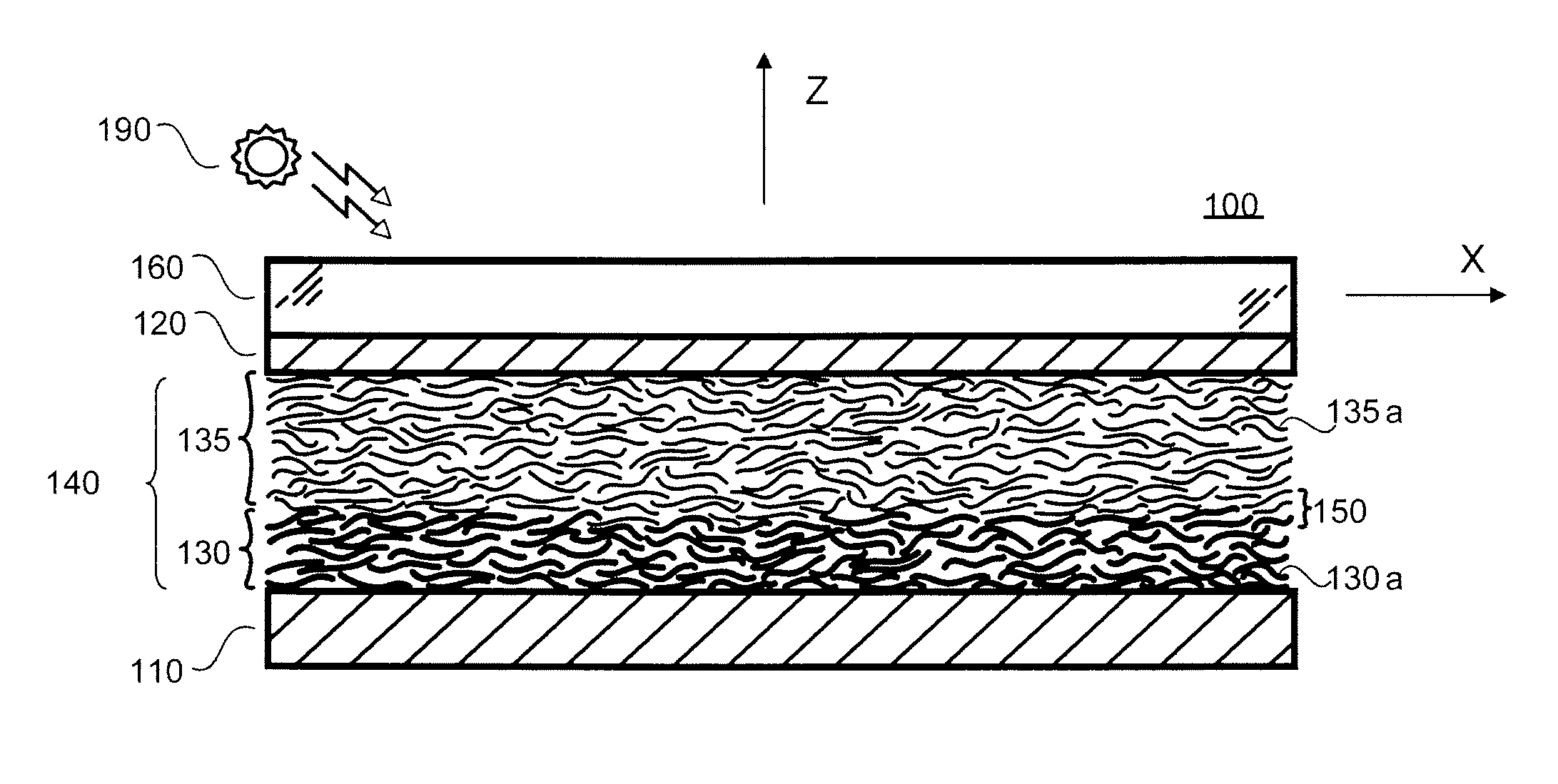Photovoltaic devices using semiconducting nanotube layers
- Summary
- Abstract
- Description
- Claims
- Application Information
AI Technical Summary
Benefits of technology
Problems solved by technology
Method used
Image
Examples
Embodiment Construction
[0046]The present disclosure teaches a plurality of photovoltaic (PV) devices which use layers of semiconducting carbon nanotubes as the light absorption layer.
[0047]In some embodiments of the present disclosure a p-n junction PV device is realized by forming a layer of p-type semiconducting carbon nanotubes adjacent to a layer of n-type semiconducting carbon nanotubes, creating a p-n junction across the interface of the two layers. Within such embodiments, the p-type carbon nanotube layer acts as a light absorption material, releasing valance electrons into the conduction band of the nanotube structures when photons are absorbed. In some aspects of these embodiments, these p-type carbon nanotube layers include photosensitive particles such as, but not limited to, photosensitive dyes such as ruthenium-polypyridine and quantum dots made from III-V compounds such as GaAs, GaSb, and InP or II-VI compounds such as CdS, CdSe, ZnS, and ZnSe. Such nanoparticles can be dispersed in the nano...
PUM
 Login to View More
Login to View More Abstract
Description
Claims
Application Information
 Login to View More
Login to View More - R&D
- Intellectual Property
- Life Sciences
- Materials
- Tech Scout
- Unparalleled Data Quality
- Higher Quality Content
- 60% Fewer Hallucinations
Browse by: Latest US Patents, China's latest patents, Technical Efficacy Thesaurus, Application Domain, Technology Topic, Popular Technical Reports.
© 2025 PatSnap. All rights reserved.Legal|Privacy policy|Modern Slavery Act Transparency Statement|Sitemap|About US| Contact US: help@patsnap.com



